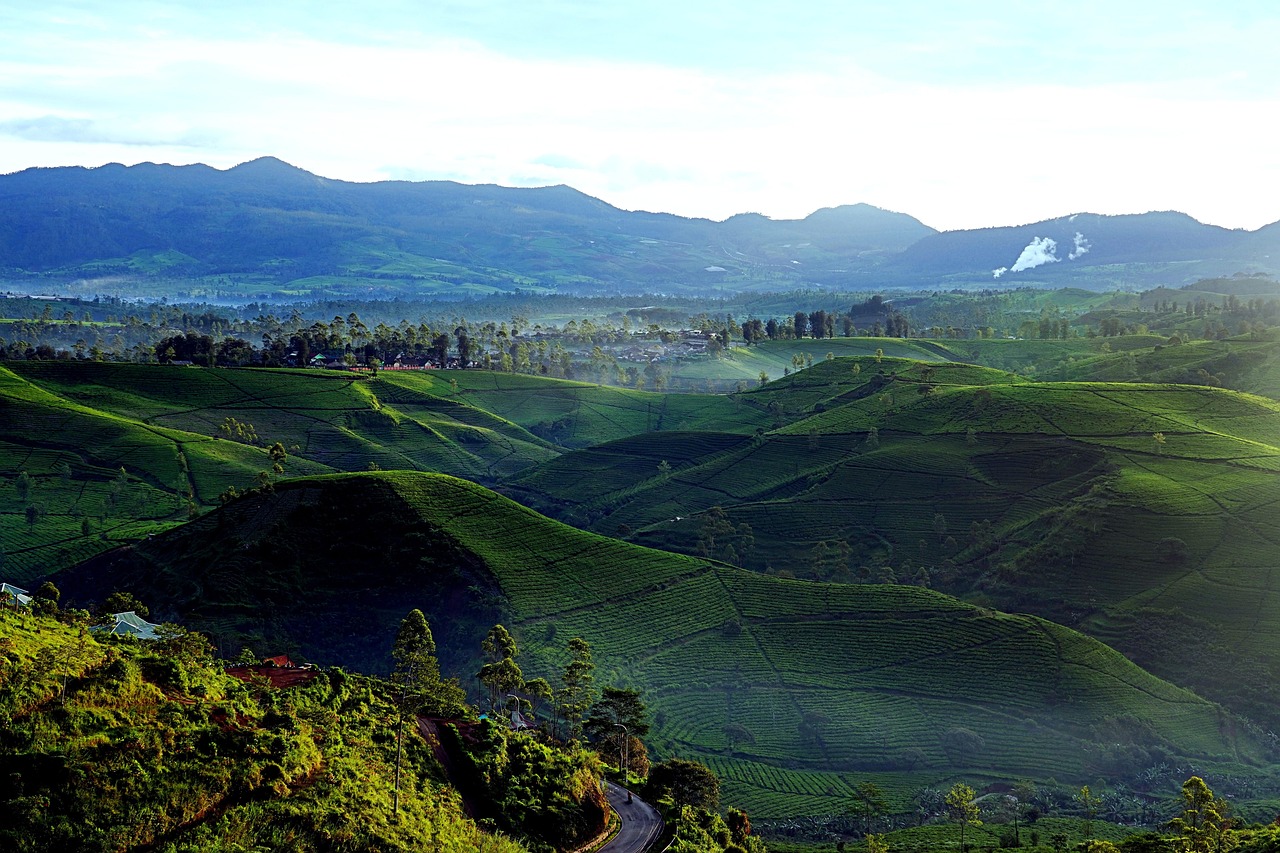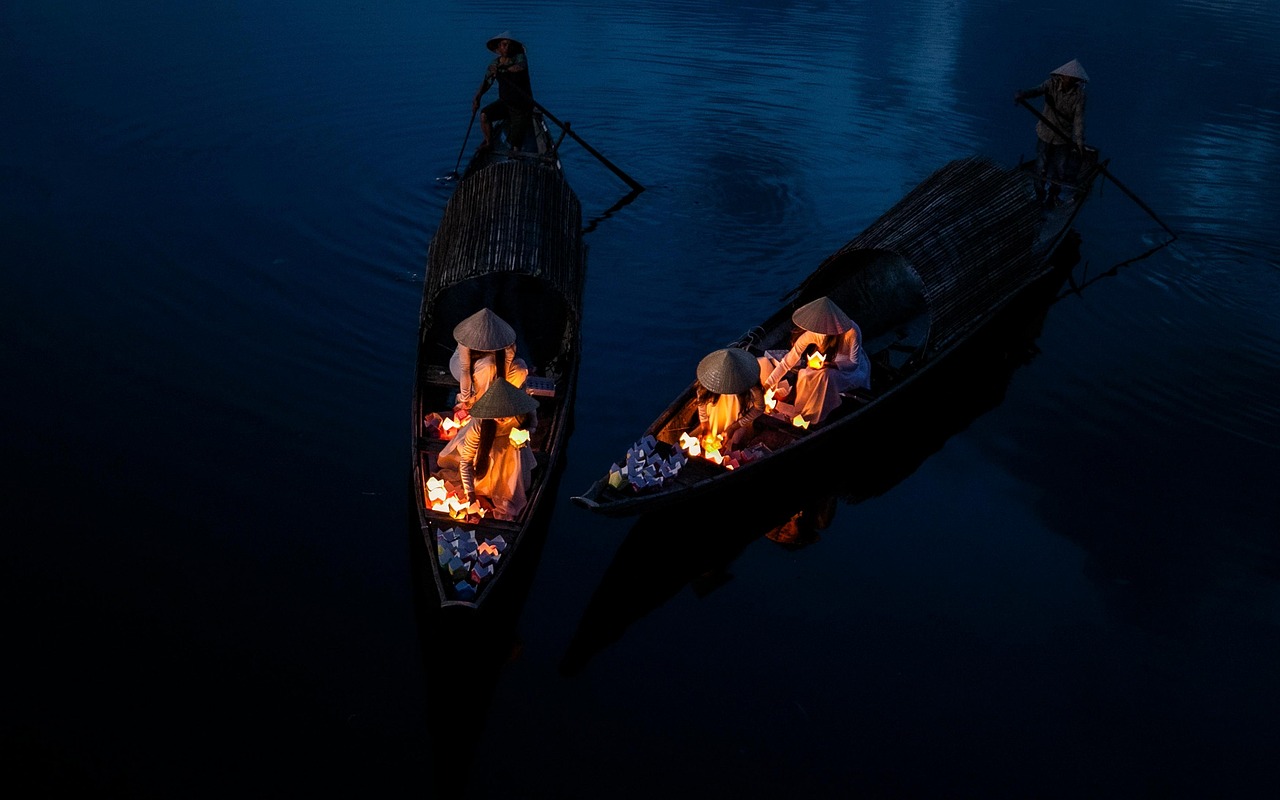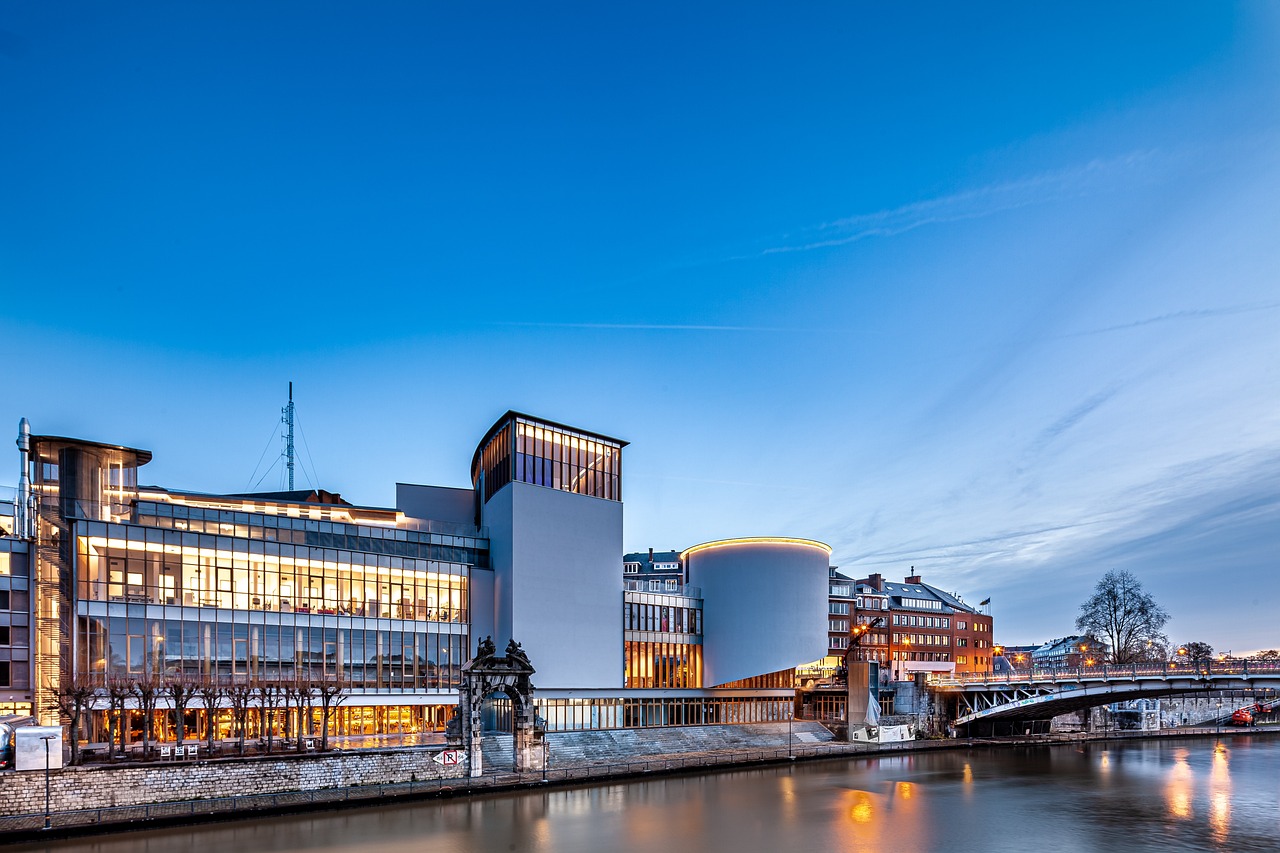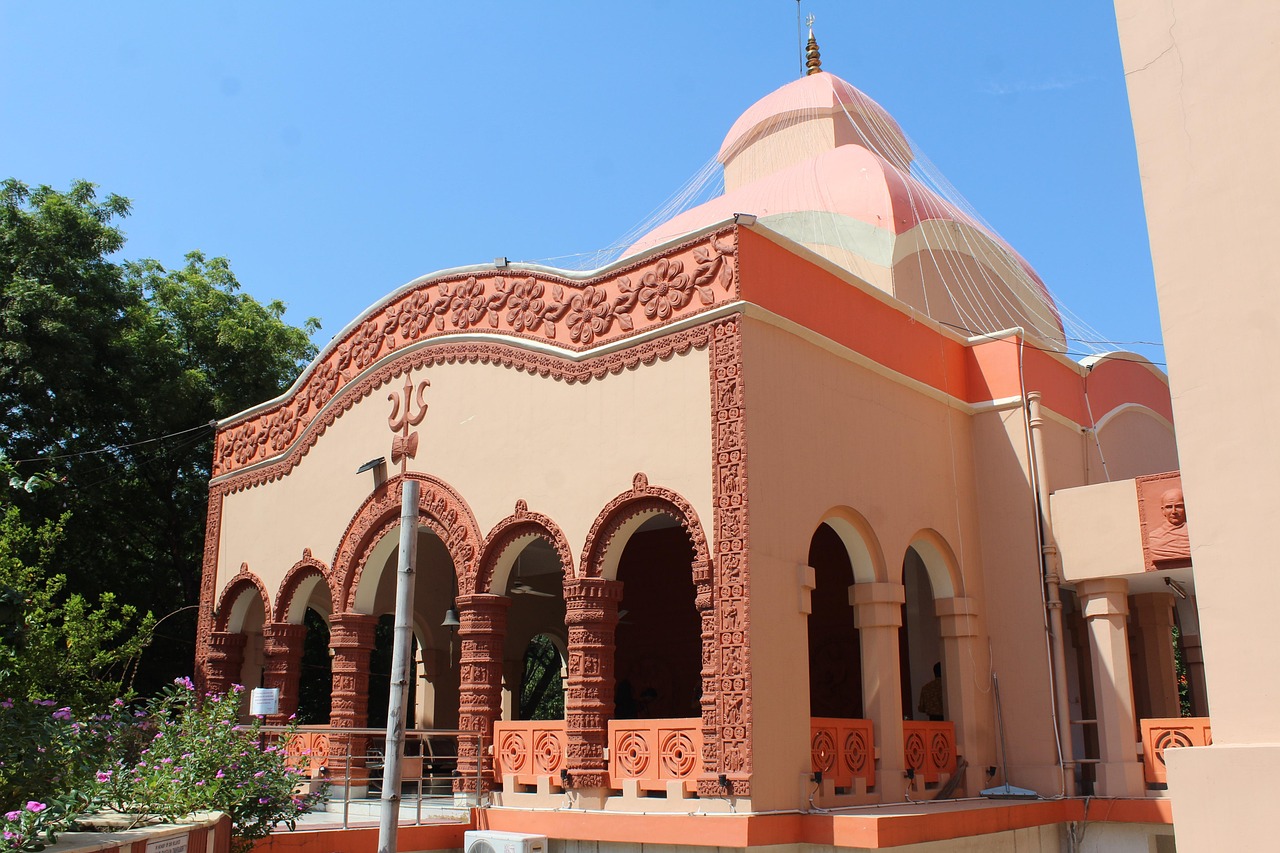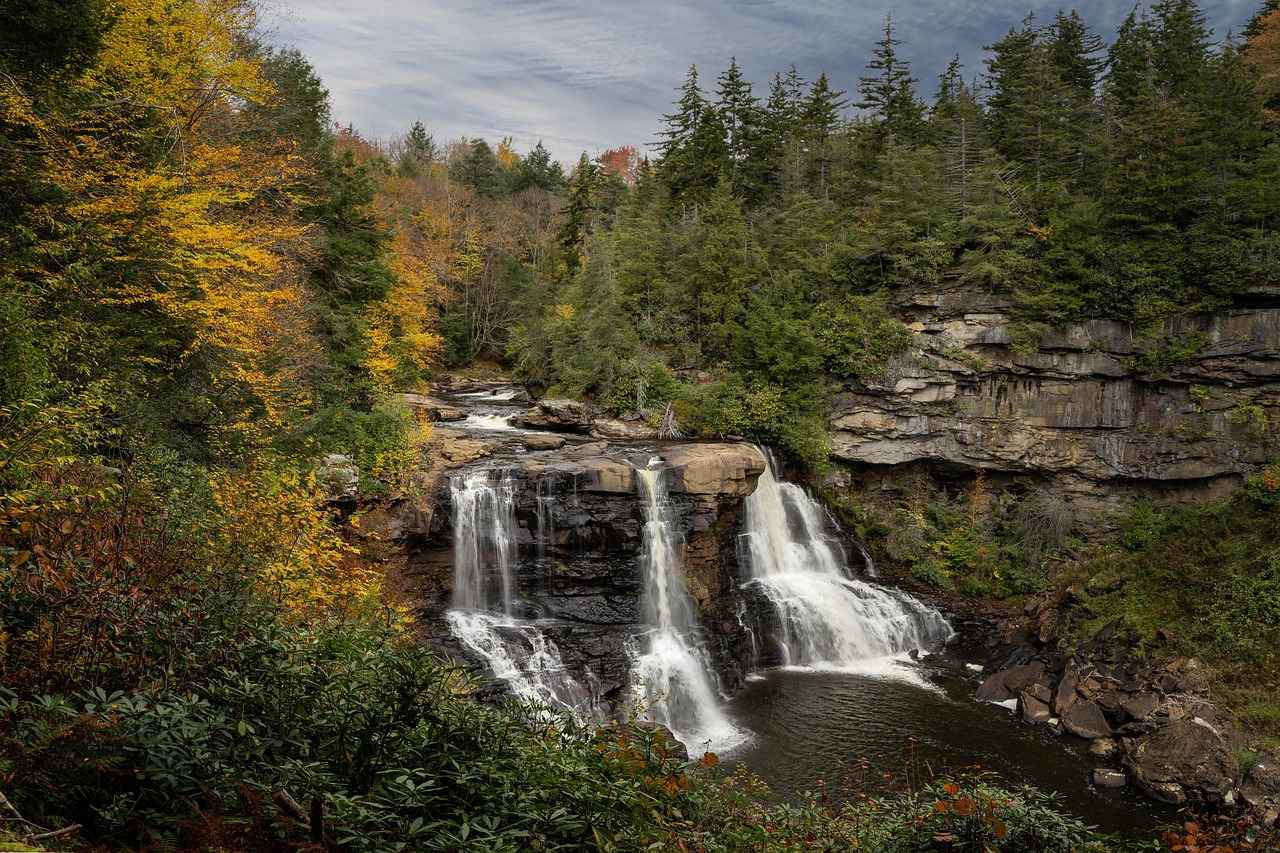This article delves into the significant influence of tourism on the economy of West Bengal, emphasizing its contributions, challenges, and future prospects for sustainable growth in the region.
1. Overview of West Bengal’s Tourism Sector
West Bengal is renowned for its diverse tourism sector, which includes cultural heritage, natural landscapes, and religious sites. This variety plays a crucial role in enhancing the state’s economic framework.
2. Economic Contributions of Tourism
The tourism industry in West Bengal is a vital economic driver, generating substantial revenue and creating numerous job opportunities. This sector significantly impacts the overall economic development of the state.
- 2.1 Job Creation in the Tourism Industry
The tourism sector provides employment across various levels, from hospitality to transportation, thereby reducing unemployment rates in West Bengal.
- 2.1.1 Skill Development Initiatives
Various skill development programs are in place to equip the local workforce with essential skills, enhancing their employability within the tourism sector.
- 2.1.2 Impact on Local Communities
Tourism stimulates economic growth in local communities by increasing demand for goods and services, ultimately uplifting the living standards of residents.
- 2.1.1 Skill Development Initiatives
- 2.2 Revenue Generation
Tourism contributes to the state’s economy through direct and indirect revenue streams, including taxes, entrance fees, and tourist spending in local businesses.
3. Cultural Heritage and Tourism
The rich cultural heritage of West Bengal attracts tourists, offering unique experiences that promote the preservation of local traditions and customs.
- 3.1 Festivals and Events
Cultural festivals and events are pivotal in drawing tourists, showcasing the vibrant arts, music, and culinary traditions of West Bengal.
- 3.2 Historical Sites
The state is home to numerous historical sites that serve as major tourist attractions, enhancing visitors’ understanding of West Bengal’s rich history and culture.
4. Natural Attractions and Eco-Tourism
The diverse landscapes of West Bengal, including hills, forests, and rivers, present opportunities for eco-tourism, promoting sustainable travel practices while boosting the local economy.
- 4.1 Wildlife Sanctuaries
Wildlife sanctuaries in the state attract nature enthusiasts and contribute to conservation efforts, balancing tourism with environmental preservation.
- 4.2 Adventure Tourism
Adventure tourism activities, such as trekking and river rafting, are gaining popularity, offering thrilling experiences while generating income for local communities.
5. Challenges Facing the Tourism Sector
Despite its growth, West Bengal’s tourism sector faces several challenges, including infrastructure deficits, seasonal fluctuations, and the need for improved marketing strategies to attract more visitors.
- 5.1 Infrastructure Development
Enhancing transportation and accommodation facilities is critical for improving the overall tourist experience and increasing visitor numbers in the region.
- 5.2 Seasonal Variability
Tourism in West Bengal often experiences seasonal fluctuations, leading to revenue and employment variability, necessitating strategies for year-round attractions.
6. Future Prospects for Sustainable Tourism
The future of tourism in West Bengal lies in adopting sustainable practices that balance economic growth with environmental conservation, ensuring long-term benefits for the region.
- 6.1 Government Initiatives
The state government is implementing policies aimed at promoting sustainable tourism, focusing on environmental protection and community engagement.
- 6.2 Community-Based Tourism
Encouraging community-based tourism can empower local populations, enhance cultural exchanges, and create authentic experiences for tourists while benefiting the local economy.
Conclusion
In summary, tourism is a vital component of West Bengal’s economy, offering numerous benefits while also presenting challenges. Emphasizing sustainable practices will be crucial for the future growth of this sector.

1. Overview of West Bengal’s Tourism Sector
West Bengal is a state in India renowned for its rich cultural heritage, stunning landscapes, and vibrant religious practices. The tourism sector here is not only diverse but also plays a pivotal role in the state’s economy. With its unique blend of cultural experiences, breathtaking natural beauty, and significant religious sites, West Bengal attracts millions of visitors each year, contributing immensely to its economic landscape.
The state’s tourism offerings range from the serene Sundarbans, home to the majestic Royal Bengal Tiger, to the bustling streets of Kolkata, where colonial architecture meets modern life. Visitors can explore historical landmarks, indulge in local cuisine, and participate in traditional festivals, making West Bengal a melting pot of experiences.
In recent years, the government has recognized the importance of tourism in driving economic growth. Efforts have been made to enhance infrastructure, promote eco-tourism, and develop cultural tourism initiatives. The state’s commitment to preserving its heritage while promoting tourism is evident in various projects aimed at improving visitor experiences.
- Cultural Heritage: West Bengal is home to numerous museums, art galleries, and historical sites that showcase its rich history.
- Natural Beauty: With hills, forests, and rivers, the state offers a plethora of eco-tourism opportunities.
- Religious Sites: Temples, mosques, and churches attract pilgrims and tourists alike, enriching the spiritual landscape.
As the tourism sector continues to grow, it faces challenges such as infrastructure deficits and the need for better marketing strategies. However, the future looks promising with a focus on sustainable practices that aim to balance economic development with environmental conservation. This approach not only ensures long-term benefits for the region but also enhances the overall visitor experience.
In conclusion, West Bengal’s tourism sector is a vital component of its economy, providing numerous opportunities for growth and development. The state’s rich cultural heritage, natural beauty, and religious significance create a unique tourism experience that continues to attract visitors from around the world.

2. Economic Contributions of Tourism
The Economic Contributions of Tourism
Tourism plays a vital role in shaping the economy of West Bengal, acting as a catalyst for growth and development. The sector not only generates significant revenue but also creates numerous job opportunities, thereby enhancing the livelihoods of local communities. This article delves into the multifaceted economic contributions of tourism in West Bengal, illustrating how it impacts various sectors and stimulates overall economic progress.
| Economic Contribution | Description |
|---|---|
| Revenue Generation | Tourism contributes to the state’s economy through direct spending by tourists on accommodations, food, and activities, as well as through indirect revenue streams such as taxes and local business sales. |
| Job Creation | The tourism industry is a significant source of employment, providing jobs in various sectors including hospitality, transportation, and entertainment, thereby reducing the unemployment rate in the region. |
| Support for Local Businesses | Increased tourist activity boosts demand for local goods and services, benefiting small businesses and artisans, which in turn strengthens the local economy. |
Furthermore, the tourism sector fosters skill development initiatives aimed at equipping the local workforce with essential skills, enhancing their employability within the industry. Programs focusing on hospitality management, language training, and customer service are crucial in preparing the workforce for the growing demands of the tourism sector.
Additionally, tourism positively impacts local communities by promoting cultural exchange and preserving local traditions. Festivals and events celebrating West Bengal’s rich heritage attract visitors, creating a vibrant atmosphere that enriches the cultural landscape.
In conclusion, the economic contributions of tourism in West Bengal are profound and far-reaching. By generating revenue, creating jobs, and supporting local businesses, the tourism sector not only enhances the state’s economic growth but also uplifts the standard of living for its residents. As the industry continues to evolve, embracing sustainable practices will be essential for ensuring long-term benefits for both the economy and the communities it serves.
2.1 Job Creation in the Tourism Industry
Job Creation in the Tourism Industry
The tourism industry in West Bengal plays a pivotal role in job creation, providing a wide array of employment opportunities across multiple sectors. From hospitality to transportation, the industry significantly contributes to lowering the unemployment rates in the region.
With the influx of tourists, there is a growing demand for skilled professionals in various fields. The hospitality sector alone, which includes hotels, restaurants, and resorts, requires a substantial workforce. This demand has led to the creation of numerous jobs, catering to both skilled and unskilled labor.
1. Diverse Employment Opportunities
- Hospitality: Hotels, restaurants, and catering services are always in need of chefs, waitstaff, and management personnel.
- Transportation: Tour guides, drivers, and logistics coordinators are essential for facilitating travel.
- Tourism Management: Professionals in marketing, event planning, and customer service are increasingly sought after.
2. Skill Development Initiatives
To further enhance employability, various skill development programs are implemented. These initiatives aim to equip the local workforce with the necessary skills to thrive in the tourism sector. Training in areas such as hospitality management, culinary arts, and tour guiding not only improves job prospects but also ensures high-quality service for tourists.
3. Impact on Local Communities
Tourism not only creates jobs but also fosters economic growth within local communities. As the demand for goods and services increases, local businesses flourish, leading to an overall uplift in the standard of living for residents. This ripple effect of job creation contributes to a more vibrant and sustainable economy.
In conclusion, the tourism sector in West Bengal serves as a vital engine for job creation, offering diverse opportunities while simultaneously uplifting local communities. With continued investment in skill development and infrastructure, the potential for growth in this sector remains promising.
2.1.1 Skill Development Initiatives
Skill Development Initiatives in the tourism sector of West Bengal are crucial for enhancing the employability of the local workforce. These initiatives are designed to bridge the gap between the skills possessed by individuals and the requirements of the tourism industry.
To achieve this, various programs have been launched that focus on training and capacity building. These programs cover a wide range of skills, including hospitality management, customer service, and tour guiding. By equipping individuals with these essential skills, the programs aim to prepare them for various roles within the tourism sector.
- Vocational Training Centers: These centers offer specialized courses that cater to the needs of the tourism industry, providing hands-on experience and practical knowledge.
- Collaboration with Educational Institutions: Partnerships between tourism boards and local colleges help in developing curricula that are relevant to current industry standards.
- Workshops and Seminars: Regular workshops conducted by industry experts provide insights into the latest trends and technologies in tourism.
Moreover, these skill development initiatives not only enhance individual employability but also contribute to the overall growth of the tourism sector. As more individuals become skilled professionals, the quality of service in the industry improves, leading to higher customer satisfaction and repeat visits.
Furthermore, the impact of these initiatives extends to local communities. When residents are trained and employed in the tourism sector, it leads to increased economic activity, as they spend their earnings within the community. This creates a ripple effect that benefits local businesses and improves the overall standard of living.
In conclusion, skill development initiatives play a pivotal role in shaping the future of the tourism sector in West Bengal. By investing in the local workforce, the state not only enhances employability but also ensures sustainable growth in tourism, making it a win-win situation for both individuals and the community at large.
2.1.2 Impact on Local Communities
Impact on Local Communities
Tourism serves as a vital catalyst for economic growth in local communities, particularly in regions rich in cultural and natural resources. By increasing the demand for goods and services, tourism plays a crucial role in uplifting the standard of living for residents. This section delves into how tourism positively influences local economies and the lives of community members.
- Boosting Local Businesses: The influx of tourists creates a surge in demand for local products and services, ranging from handicrafts to food. Small businesses, such as local restaurants and shops, often experience increased sales, which can lead to expansion and job creation.
- Job Opportunities: The tourism sector generates a wide range of employment opportunities. From hospitality and guiding services to transportation, tourism creates jobs that can significantly reduce local unemployment rates. This influx of job opportunities can lead to improved economic stability for families.
- Investment in Infrastructure: As tourism grows, local governments often invest in infrastructure improvements, such as better roads, public transport, and sanitation facilities. These enhancements not only benefit tourists but also improve the quality of life for local residents.
- Community Development: Increased tourism revenue can be reinvested into community projects, such as schools, healthcare facilities, and recreational areas. This reinvestment leads to enhanced community well-being and fosters a sense of pride among residents.
- Cultural Exchange: Tourism promotes cultural exchange, allowing local communities to share their traditions and heritage with visitors. This interaction can lead to greater cultural appreciation and preservation, enriching the local identity.
In conclusion, the impact of tourism on local communities is profound. By fostering economic growth, creating jobs, and enhancing infrastructure, tourism not only uplifts the standard of living for residents but also fosters a vibrant community spirit. The positive effects of tourism can lead to sustainable development, ensuring that local communities thrive alongside their natural and cultural resources.
2.2 Revenue Generation
The Impact of Tourism in West Bengal’s Economy
Tourism plays a vital role in shaping the economy of West Bengal, serving as a significant driver of revenue generation. The influx of visitors not only enhances the state’s economic landscape but also contributes to the overall development of local communities.
Direct Revenue Streams
- Taxes: The tourism sector generates substantial tax revenue for the state, including sales tax, hotel tax, and other levies that contribute to public services and infrastructure development.
- Entrance Fees: Many tourist attractions in West Bengal charge entrance fees, which directly support the maintenance and preservation of these sites, ensuring they remain accessible for future generations.
- Local Business Spending: Tourists spend money on a variety of local businesses, including restaurants, shops, and services, creating a ripple effect that stimulates further economic activity.
Indirect Revenue Streams
- Job Creation: The tourism industry creates numerous job opportunities across various sectors, from hospitality to transportation, significantly impacting employment rates in the region.
- Investment in Infrastructure: Increased tourism leads to enhanced infrastructure development, including roads, airports, and public facilities, benefiting both tourists and local residents.
Conclusion
The revenue generated from tourism is essential for West Bengal’s economic growth. By harnessing both direct and indirect revenue streams, the state can continue to develop its tourism sector while ensuring sustainable practices that benefit local communities. As tourism evolves, ongoing investment and strategic planning will be crucial to maximizing its economic potential.

3. Cultural Heritage and Tourism
West Bengal, a state in eastern India, is renowned for its rich cultural heritage that draws countless tourists each year. The unique blend of traditions, art forms, and historical significance creates an inviting atmosphere for visitors, making it a pivotal destination for cultural tourism.
The state’s cultural heritage is not only a source of pride for its residents but also a vital component of its economy. Tourists flock to West Bengal to experience its vibrant festivals, exquisite handicrafts, and renowned culinary delights. This influx of visitors plays a crucial role in the preservation and promotion of local traditions and customs, ensuring they remain vibrant for future generations.
Throughout the year, West Bengal hosts a variety of festivals that celebrate its diverse culture. Events such as Durga Puja, Poila Baisakh (Bengali New Year), and the Kolkata Book Fair attract both domestic and international tourists. These celebrations not only showcase the state’s artistic talents but also provide a platform for local artisans and performers, significantly boosting the local economy.
West Bengal is home to numerous historical sites that tell the story of its rich past. The Victoria Memorial, Howrah Bridge, and the Indian Museum are just a few attractions that enhance tourists’ understanding of the state’s history. These sites serve as educational resources, allowing visitors to engage with the region’s cultural narrative while contributing to its economic sustainability.
The state’s culinary heritage is another major draw for tourists. West Bengal is famous for its fish curries, sweets like rasgulla and sandesh, and unique street food. Culinary tours and cooking classes are increasingly popular, providing visitors with hands-on experiences that deepen their appreciation for the local culture.
In conclusion, the intersection of cultural heritage and tourism in West Bengal not only enriches the visitor experience but also plays a critical role in the preservation of the state’s traditions. By promoting these cultural assets, West Bengal can continue to attract tourists and support its local communities, ensuring that its rich heritage remains alive and thriving.
3.1 Festivals and Events
Festivals and events are integral to the cultural fabric of West Bengal, acting as vibrant showcases of the region’s rich arts, music, and culinary traditions. These celebrations not only attract tourists but also foster a sense of community and belonging among locals.
One of the most notable festivals is Durga Puja, a grand celebration that honors the goddess Durga. This festival transforms cities into vibrant hubs of creativity, with intricately crafted idols, elaborate pandals, and mesmerizing cultural performances. Visitors from around the world flock to witness the artistic displays and partake in the joyous atmosphere, significantly boosting local tourism.
Another significant event is the Kolkata Book Fair, which attracts bibliophiles and authors alike. This fair not only promotes literature but also showcases the city’s cultural diversity through various workshops, discussions, and performances. It serves as a platform for local authors and publishers, enhancing the literary scene while drawing in tourists eager to explore the intellectual richness of West Bengal.
- Bengali New Year (Pohela Boishakh) is celebrated with traditional music, dance, and food, attracting many tourists who wish to experience the local customs.
- Chhath Puja is another festival that highlights the region’s religious significance, drawing visitors to the banks of rivers where rituals are performed.
- Howrah Bridge Festival showcases the architectural marvel of the Howrah Bridge through cultural performances and exhibitions, appealing to both locals and tourists.
These festivals not only provide entertainment but also support the local economy by creating job opportunities in hospitality, transportation, and retail sectors. Local artisans and vendors benefit from the influx of tourists, promoting sustainable economic growth.
In conclusion, the cultural festivals and events of West Bengal are vital in attracting tourists, offering them a unique glimpse into the region’s vibrant traditions. They play a crucial role in preserving cultural heritage while simultaneously contributing to the economic well-being of local communities.
3.2 Historical Sites
Exploring the Historical Sites of West Bengal
West Bengal, a state steeped in rich history and cultural diversity, is home to a plethora of historical sites that attract tourists from around the globe. These sites not only serve as major tourist attractions but also play a crucial role in enhancing the understanding of the region’s past and its cultural significance.
| Historical Site | Description | Location |
|---|---|---|
| Victoria Memorial | A magnificent marble building dedicated to Queen Victoria, showcasing Indo-Saracenic architecture. | Kolkata |
| Howrah Bridge | An iconic cantilever bridge that symbolizes Kolkata, known for its engineering marvel. | Kolkata |
| Murshidabad | The former capital of Bengal, rich in history with palaces and mosques from the Nawabi era. | Murshidabad |
| Shantiniketan | A cultural hub founded by Rabindranath Tagore, emphasizing education and the arts. | Bolpur |
These historical sites not only reflect the architectural brilliance of their time but also serve as a testament to the cultural evolution of West Bengal. For instance, the Victoria Memorial stands as a symbol of the British colonial era, while Shantiniketan represents the progressive ideals of Tagore.
Moreover, the preservation of these sites is vital for maintaining the cultural heritage of the region. They provide an opportunity for locals and tourists alike to engage with history, fostering a deeper appreciation for the state’s past.
In conclusion, the historical sites of West Bengal are not merely attractions; they are gateways to understanding the state’s rich heritage and cultural identity. By visiting these sites, tourists contribute to the local economy while gaining insights into the vibrant history that shapes West Bengal today.

4. Natural Attractions and Eco-Tourism
Natural Attractions and Eco-Tourism in West Bengal
West Bengal is a treasure trove of natural beauty, characterized by its majestic hills, lush forests, and winding rivers. These diverse landscapes not only enhance the state’s aesthetic appeal but also provide ample opportunities for eco-tourism. This form of tourism emphasizes sustainable travel practices, ensuring that the natural environment is preserved while also benefiting the local economy.
4.1 The Significance of Eco-Tourism
Eco-tourism in West Bengal serves as a vital link between the community and the environment. Tourists are increasingly seeking experiences that allow them to connect with nature, and West Bengal’s rich biodiversity offers just that. By promoting eco-friendly practices, the state encourages visitors to engage in activities like bird watching, nature trails, and wildlife photography, all of which support conservation efforts.
4.2 Economic Boost from Eco-Tourism
The influx of eco-tourists leads to a significant economic boost for local communities. As demand for eco-friendly accommodations and services rises, local entrepreneurs can thrive. This results in job creation and the development of sustainable businesses that cater to both tourists and residents. For instance, local artisans can sell their crafts, and farmers can offer organic produce, creating a symbiotic relationship between tourism and local economies.
4.3 Wildlife Sanctuaries: A Haven for Nature Lovers
West Bengal is home to several renowned wildlife sanctuaries, such as the Sundarbans and Buxa Tiger Reserve. These areas not only attract nature enthusiasts but also play a crucial role in conservation efforts. By visiting these sanctuaries, tourists contribute to the funding of wildlife protection programs, ensuring that the delicate ecosystems are preserved for future generations.
4.4 Adventure Tourism: Thrilling Experiences Await
Adventure tourism is gaining traction in West Bengal, with activities such as trekking, river rafting, and camping becoming increasingly popular. These thrilling experiences attract adventure seekers, providing them with an adrenaline rush while simultaneously generating income for local communities. Tour operators who specialize in adventure tourism are emerging, further enhancing the state’s appeal as a destination for thrill-seekers.
Conclusion
In conclusion, West Bengal’s natural attractions and eco-tourism initiatives offer a unique opportunity to blend tourism with sustainable practices. By promoting eco-friendly travel and supporting local economies, the state can ensure that its breathtaking landscapes remain intact for generations to come.
4.1 Wildlife Sanctuaries
Wildlife Sanctuaries in West Bengal play a crucial role in attracting nature enthusiasts while simultaneously contributing to vital conservation efforts. These protected areas serve as a haven for diverse species, fostering a unique ecosystem that is both a tourist attraction and a sanctuary for wildlife.
West Bengal is home to several renowned wildlife sanctuaries, each offering a unique glimpse into the rich biodiversity of the region. For instance, the Sundarbans National Park, a UNESCO World Heritage Site, is famous for its mangrove forests and is the habitat of the elusive Bengal tiger. This sanctuary not only draws tourists for its stunning landscapes but also plays a pivotal role in the conservation of endangered species.
The state’s wildlife sanctuaries are designed to balance tourism with environmental preservation. By implementing strict regulations and promoting eco-friendly practices, these areas ensure that the natural habitat remains undisturbed. Tourists are encouraged to engage in responsible tourism, which includes guided tours that educate visitors on the importance of conservation and the delicate balance of the ecosystem.
- Educational Programs: Many sanctuaries offer educational programs that inform visitors about the local flora and fauna, emphasizing the importance of conservation.
- Community Involvement: Local communities are often involved in tourism initiatives, providing them with a sustainable source of income while fostering a sense of stewardship for their natural surroundings.
- Eco-Tourism Initiatives: Eco-friendly accommodations and activities are promoted, ensuring that tourism does not compromise the integrity of the wildlife habitats.
In conclusion, the wildlife sanctuaries of West Bengal not only attract nature enthusiasts but also serve as critical sites for conservation efforts. By balancing tourism with environmental preservation, these sanctuaries contribute to the state’s economy while safeguarding its natural heritage for future generations.
4.2 Adventure Tourism
Adventure tourism has emerged as a significant segment within the broader tourism industry, particularly in regions rich in natural landscapes and cultural diversity. In West Bengal, activities such as trekking and river rafting are not just thrilling experiences; they also serve as vital income sources for local communities.
As tourists seek more immersive experiences, adventure tourism offers a unique blend of excitement and exploration. This growing trend has led to the development of numerous adventure sports facilities, attracting both domestic and international travelers.
| Adventure Activity | Description | Impact on Local Communities |
|---|---|---|
| Trekking | Exploring the scenic trails of the Himalayas and other mountainous regions. | Creates jobs for local guides and boosts the economy through accommodation and food services. |
| River Rafting | Thrilling rides on the rapids of rivers like Teesta and Ganges. | Encourages the development of safety training and equipment rental businesses. |
Furthermore, adventure tourism promotes environmental awareness among participants, fostering a sense of responsibility towards nature. Tourists are often encouraged to engage in sustainable practices, such as minimizing waste and respecting local wildlife, which can lead to long-term conservation efforts.
Local communities benefit not only from direct economic gains but also from the cultural exchange that occurs when tourists interact with residents. This interaction helps preserve local traditions and crafts, providing a platform for cultural heritage to thrive.
In conclusion, the rise of adventure tourism in West Bengal is a multifaceted phenomenon that enriches both the economy and the cultural fabric of the region. By embracing this trend, local communities can harness its potential for sustainable growth, ensuring that the benefits of tourism are felt for generations to come.
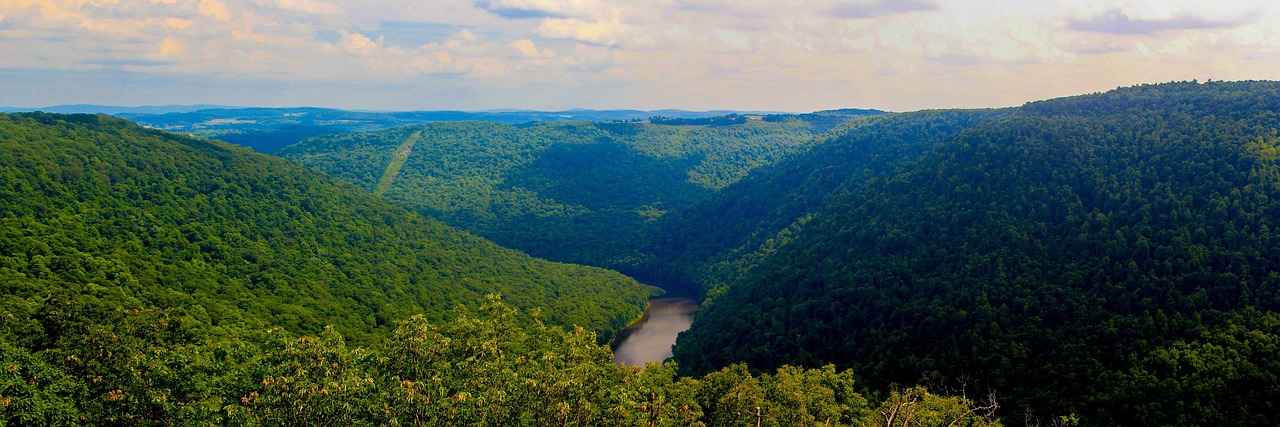
5. Challenges Facing the Tourism Sector
Challenges Facing the Tourism Sector in West Bengal
Despite the vibrant growth of the tourism sector in West Bengal, it is confronted with several significant challenges that hinder its full potential. Addressing these obstacles is crucial for ensuring a sustainable and prosperous tourism industry in the region.
- Infrastructure Deficits: One of the most pressing issues is the inadequate infrastructure, which includes transportation, accommodation, and amenities. Many tourist destinations lack proper roads and public transport facilities, making it difficult for visitors to access key attractions. Additionally, the quality of hotels and other accommodations often does not meet international standards, which can deter potential tourists.
- Seasonal Fluctuations: The tourism industry in West Bengal experiences significant seasonal variations. Peak seasons see a surge in visitors, while off-seasons result in a sharp decline in tourism activities. This fluctuation can lead to inconsistent revenue streams for local businesses and can impact employment levels in the sector.
- Marketing Strategies: There is a pressing need for effective marketing strategies to promote West Bengal as a premier tourist destination. Current marketing efforts may not adequately highlight the unique cultural and natural attractions available, resulting in missed opportunities to attract a broader audience.
- Environmental Concerns: The rapid growth of tourism can lead to environmental degradation if not managed properly. Issues such as waste management, pollution, and the preservation of natural habitats are critical challenges that need to be addressed to maintain the ecological balance.
- Safety and Security: Ensuring the safety and security of tourists is paramount. Incidents of crime or inadequate safety measures can negatively impact the perception of West Bengal as a safe travel destination, leading to a decline in visitor numbers.
In conclusion, while West Bengal’s tourism sector holds immense potential for economic growth and cultural exchange, it must navigate these challenges effectively. By investing in infrastructure, developing year-round attractions, and implementing robust marketing strategies, West Bengal can enhance its appeal and ensure a sustainable tourism industry for the future.
5.1 Infrastructure Development
Infrastructure Development is a critical factor in the growth of the tourism sector in West Bengal. Enhancing transportation and accommodation facilities is essential for improving the overall tourist experience and increasing visitor numbers in the region.
Visitors to West Bengal seek not only cultural experiences but also the convenience of reliable transportation and comfortable lodging. To attract more tourists, the state must focus on several key areas:
- Transportation Infrastructure: Upgrading roads, railways, and airports is vital. Improved connectivity ensures that tourists can easily access popular destinations such as Darjeeling, Sundarbans, and Kolkata.
- Public Transport Options: Expanding public transport services, including buses and ferries, can provide tourists with affordable and efficient means to explore the region.
- Accommodation Facilities: A diverse range of accommodation options, from luxury hotels to budget hostels, should be available to cater to different types of travelers. This variety enhances the appeal of West Bengal as a tourist destination.
- Accessibility for All: Ensuring that facilities are accessible for individuals with disabilities is not only a legal requirement but also enhances the overall experience for all visitors.
Moreover, the state government can collaborate with private stakeholders to invest in smart tourism technologies. These technologies can streamline booking processes and provide real-time information to tourists, enhancing their travel experience.
In conclusion, by prioritizing infrastructure development, West Bengal can significantly improve its tourism sector. This investment will lead to a more enjoyable experience for visitors, ultimately resulting in increased tourist arrivals and economic growth for the region.
5.2 Seasonal Variability
Seasonal Variability in West Bengal’s Tourism Industry is a significant challenge that impacts the economic stability of the region. The state experiences fluctuations in tourist arrivals, which can lead to periods of low revenue and employment opportunities. Understanding this seasonal pattern is crucial for stakeholders aiming to develop effective strategies for year-round tourism.
West Bengal’s tourism sector is influenced by various factors, including weather conditions, cultural festivals, and holiday seasons. For instance, the peak tourist season typically occurs during the winter months, attracting visitors eager to explore the state’s rich cultural heritage and natural beauty. Conversely, the monsoon season often sees a decline in tourist activity, leading to decreased income for local businesses and service providers.
To address these seasonal fluctuations, it is essential for stakeholders to implement strategies that promote year-round attractions. This can include:
- Diversifying Attractions: Developing new attractions that cater to different interests, such as eco-tourism, adventure sports, and wellness retreats, can help draw visitors throughout the year.
- Promoting Off-Season Events: Organizing festivals, workshops, and cultural events during the off-peak months can encourage tourists to visit when they typically wouldn’t.
- Enhancing Marketing Efforts: Utilizing digital marketing to target specific demographics and promote lesser-known attractions can help maintain a steady influx of tourists.
Moreover, collaboration between the government and local businesses is vital for implementing these strategies effectively. By fostering a supportive environment for tourism development, West Bengal can mitigate the impacts of seasonal variability.
In conclusion, while seasonal variability poses challenges for the tourism industry in West Bengal, it also presents opportunities for innovation and growth. By focusing on year-round attractions and strategic marketing, the state can enhance its tourism appeal and ensure a more stable economic landscape.

6. Future Prospects for Sustainable Tourism
The Future of Tourism in West Bengal is a critical topic as it intertwines with the region’s economic growth and environmental sustainability. As the tourism industry continues to expand, it is imperative that we embrace sustainable practices that not only foster economic development but also protect the natural and cultural heritage of West Bengal.
In recent years, there has been a growing recognition of the importance of sustainability in tourism. This involves implementing strategies that minimize environmental impact while maximizing the benefits for local communities. The future of tourism in West Bengal hinges on several key factors:
- Community Engagement: Involving local communities in tourism planning and decision-making processes ensures that their needs and perspectives are considered, leading to more sustainable outcomes.
- Eco-Friendly Practices: Promoting eco-friendly accommodations, transportation options, and activities can significantly reduce the carbon footprint of tourism.
- Conservation Initiatives: Investing in conservation projects helps protect the rich biodiversity of West Bengal, making it a more attractive destination for eco-tourists.
- Education and Awareness: Educating tourists about the importance of preserving the environment and local culture can enhance their experience and encourage responsible behavior.
Furthermore, the integration of technology plays a significant role in promoting sustainable tourism. Digital platforms can facilitate better communication between tourists and local businesses, streamline bookings for eco-friendly activities, and provide valuable information on sustainable practices.
As we look to the future, it is clear that the path towards sustainable tourism in West Bengal is not only beneficial for the environment but also essential for the long-term economic prosperity of the region. By prioritizing sustainability, West Bengal can position itself as a leading destination for responsible travelers seeking authentic experiences.
In conclusion, the future of tourism in West Bengal lies in a harmonious balance between economic growth and environmental conservation. By adopting sustainable practices, the region can ensure that tourism continues to thrive while safeguarding its rich cultural and natural heritage for generations to come.
6.1 Government Initiatives
Government Initiatives for Sustainable Tourism in West Bengal
The state government of West Bengal is actively pursuing a range of policies and initiatives designed to promote sustainable tourism. These efforts are primarily focused on two key areas: environmental protection and community engagement. By implementing these strategies, the government aims to create a tourism model that is not only economically viable but also environmentally friendly and socially responsible.
- Environmental Conservation Programs: The government has launched various programs aimed at preserving natural resources. This includes initiatives to protect wildlife sanctuaries and promote eco-friendly practices among tourists and local businesses.
- Community Involvement: Engaging local communities in tourism planning and development is crucial. The government encourages the participation of residents in decision-making processes, ensuring that tourism benefits are distributed equitably.
- Infrastructure Development: Investments in infrastructure, such as better roads, transportation facilities, and accommodations, are essential for attracting more visitors while ensuring minimal environmental impact.
- Awareness Campaigns: The state conducts awareness campaigns to educate both tourists and locals about the importance of sustainable practices, focusing on reducing waste and conserving energy.
- Partnerships with NGOs: Collaborations with non-governmental organizations help in implementing conservation projects and enhancing community-based tourism initiatives.
These initiatives not only aim to protect the natural and cultural heritage of West Bengal but also seek to enhance the overall tourist experience. By prioritizing sustainability, the state government is paving the way for a tourism sector that benefits both the economy and the environment.
In conclusion, the government’s commitment to sustainable tourism reflects a broader understanding of the need to balance economic growth with environmental stewardship. As these initiatives take root, they are expected to create a more resilient tourism sector that supports local communities while preserving the rich natural and cultural heritage of West Bengal.
6.2 Community-Based Tourism
Community-Based Tourism (CBT) is a powerful approach that emphasizes the role of local communities in the tourism sector. By fostering direct participation and ownership, CBT not only enhances the experience for tourists but also empowers local populations in West Bengal. This model promotes authentic cultural exchanges and encourages visitors to engage with local traditions, customs, and lifestyles.
One of the primary benefits of CBT is its ability to create a more meaningful connection between tourists and the local community. Tourists are often seeking genuine experiences, and through community-based initiatives, they can participate in local activities, such as traditional crafts, cooking classes, or cultural performances. This interaction enriches the travel experience and allows tourists to gain deeper insights into the local way of life.
Moreover, community-based tourism can significantly boost the local economy. When tourists choose to stay in locally-owned accommodations or eat at local restaurants, the financial benefits are directly funneled back into the community. This not only helps to sustain local businesses but also creates jobs and promotes entrepreneurship among residents. For example, local artisans can showcase their crafts, generating income while preserving their cultural heritage.
- Empowerment of Local Populations: Community members take active roles in planning and managing tourism activities, which enhances their sense of ownership and responsibility.
- Enhanced Cultural Exchange: Tourists learn about local customs and traditions, fostering mutual respect and understanding between visitors and residents.
- Authentic Experiences: Tourists enjoy unique, off-the-beaten-path experiences that are often unavailable in traditional tourism settings.
In conclusion, community-based tourism in West Bengal serves as a catalyst for sustainable development. By prioritizing the needs and aspirations of local communities, this approach not only enriches the tourist experience but also contributes to the overall well-being of the region. As we move forward, embracing and promoting CBT can lead to a more resilient and vibrant tourism sector.
Frequently Asked Questions
- What are the main attractions for tourists in West Bengal?
West Bengal offers a rich tapestry of attractions, including stunning natural landscapes, vibrant cultural festivals, and historical sites. From the serene hills of Darjeeling to the bustling streets of Kolkata, there’s something for every traveler!
- How does tourism impact the economy of West Bengal?
Tourism significantly boosts West Bengal’s economy by generating revenue, creating jobs, and stimulating local businesses. It’s like a ripple effect, where every tourist dollar spent helps uplift communities and enhances the standard of living.
- What challenges does the tourism sector face in West Bengal?
Despite its growth, West Bengal’s tourism sector grapples with issues like inadequate infrastructure, seasonal fluctuations in visitor numbers, and the need for effective marketing strategies. These challenges can hinder the full potential of tourism in the region.
- Are there any government initiatives to promote sustainable tourism?
Yes! The state government is actively implementing policies aimed at promoting sustainable tourism. These initiatives focus on environmental conservation and community engagement, ensuring that tourism benefits both the economy and the environment.
- How can tourists contribute to local communities?
Tourists can make a positive impact by engaging in community-based tourism initiatives. By choosing local guides, staying in community-run accommodations, and purchasing local crafts, travelers can help empower residents and foster cultural exchange.
